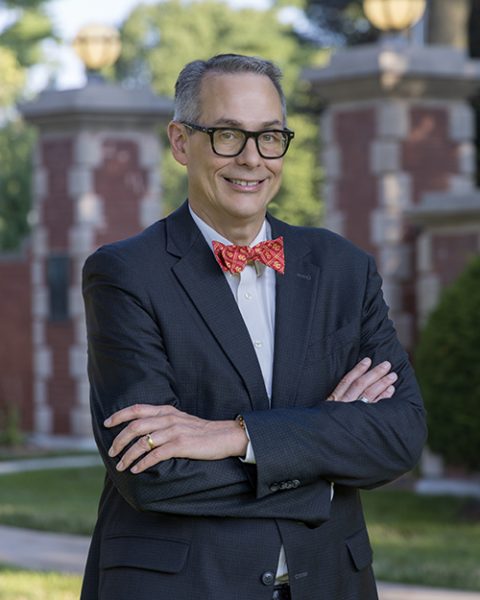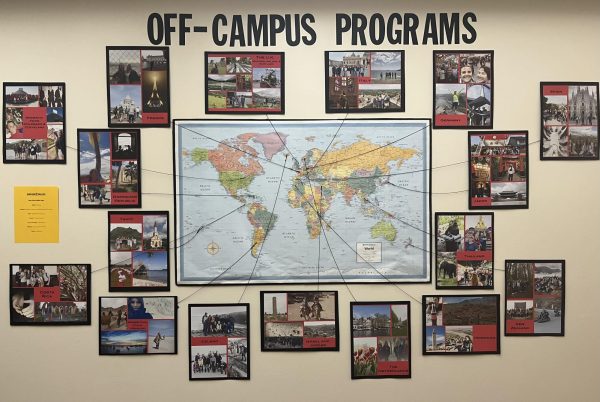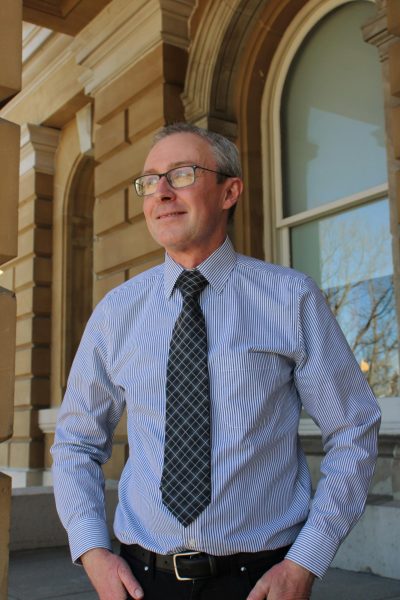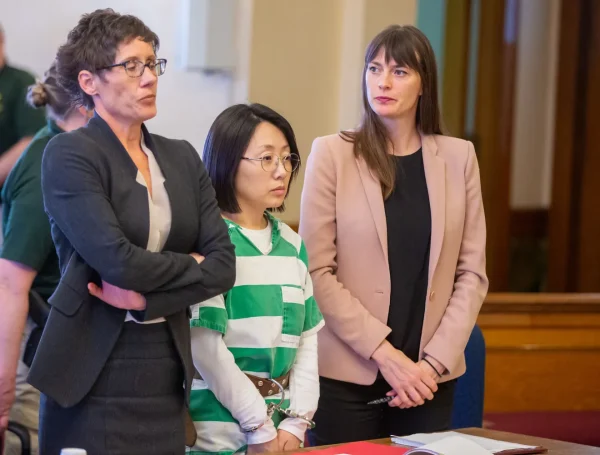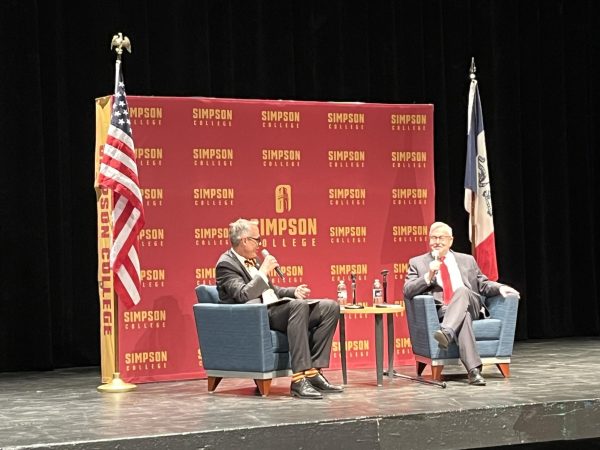Tax form raises questions about pay increases
April 21, 2010
Simpson College’s federal tax returns show what appear to be sizable raises for President John Byrd and his vice presidents in recent years, but one administrator said that data can be misleading.
Byrd earned $224,675 in 2008, the most recent year on record. According to Fred Hubbell, chairman of Simpson’s Board of Trustees, the president received a “sizable” raise two years ago after comparing Byrd’s salary with that of presidents at other schools.
“Two years ago we did the survey, and we found out we were not as competitive as we should have been, but we did make a significant increase in John’s base salary at that time, and we made a few changes to some of his benefits,” Hubbell said.
In 2006, Byrd earned $181,290 and in 2007 that compensation jumped to $218,743. Ken Birkenholtz, vice president of business and finance also received a large raise during that time. Birkenholtz earned $106,729 in 2006. In 2007, reports listed his salary at $135,973 and in 2008 at $139,885. During that time, Birkenholtz said he was offered a job with another institution and the salary increase he received to stay at Simpson was minor when compared to what he could have made elsewhere.
“I received a retention bonus that was a fraction of what I would have made in changing jobs,” Birkenholtz said.
Data for other vice presidents showed increases ranging from $8,000 to $16,000. However, Birkenholtz said that changes in how Simpson has reported salaries on tax returns in recent years makes it difficult to make year-to-year comparisons of what administrators earned in those years.
The increases did raise red flags with faculty members, however. Last week, Birkenholtz met with members of the faculty budget committee to discuss the discrepancies.
In a statement to The Simpsonian, members of the Budget and Liaison Committee said Birkenholtz told the committee that “administrators’ raises have been limited to the same range as the faculty increases in the years in question, with the exception of one administrator for who a special circumstance existed.”
Birkenholtz also told the committee that the school’s auditors had advised that items which had been reported as benefits” one year be reported as “compensation” the next, which “could allow the salary to appear to be more than it actually was,” wrote the budget committee.
The IRS Form 990 is a tax document filed each year by non-profit organizations that includes information on the organization’s mission, programs and finances. Included in the financial information is the compensation of the organization’s president, the president’s cabinet and five additional faculty members with the highest salaries.
The tax return is a public record because it promotes fiscal accountability by non profits such as Simpson who go to the public to seek donations and other forms of support for its operations.
Simpson gave most faculty members raises of 3 percent in August 2007 and August 2008, but administrators budgeted no money for employee raises in August 2009 due to the lingering effects of the recession. The current salaries of administrators won’t be reported until Simpson files its next federal tax return in late 2010 or early 2011. Byrd said that this year’s economy has been more challenging to navigate than years past.
“This year has been the year that, from the perspective of the overall economy has been the tightest, so we did not give any regular salary increases this year,” he said.
Faculty members did receive two cash bonuses throughout the year, one last September for $300 and another just last week for $500.
“Actually, the two bonuses that we’ve given this year equal about 1.6 percent of our salary pool…so what we’re looking at even though we didn’t add it to their base salary, it is 1.6 more than they would have gotten as a group,” Byrd said.
Byrd added that he is anticipating salary increases for faculty members next year.
“Next year we are planning an increase, although it’s too early to tell,” he said. “This year we’re going to wait just a little bit longer. We’re going to issue contracts, but they’ll be the same salary that people make this year, and then later this summer, once we have a clear view, then we’ll send a letter indicating to people what the salary pool is and what their new salary is for the coming year.”
Salary adjustments for faculty are generally made in September of each year. Byrd’s salary is set in May, once his year-end review is completed.
“For the purposes of compensation, we will adopt in May at the May board meeting a budget that will include a certain percentage average increase for faculty or administrators,” Hubbell explained. “Unless there’s a big change between May and October that normally doesn’t change.”
Hubbell and Byrd both agreed that they strive to keep salaries competitive with those of like schools.
Every three years the board hires an outside human resource consultant to survey schools similar to Simpson both in and outside of Iowa. They then compare the total compensation and benefits package of those schools’ presidents to that of President Byrd.
“That’s all about trying to make sure Simpson is competitive and we’re not paying too much, and not too little,” Hubbell said.
He said that it’s important to consider all parts of the president’s compensation package collectively. Including salary and benefits, Byrd’s total compensation package was reported at $301,476 for 2008. Hubbell said that number included the rental value of the Simpson-owned house where Byrd lives, the use of his vehicle and retention bonuses he may receive at a later time.
Hubbell also said he recognizes the importance of maintaining pay increases for faculty members, and that raising next year’s tuition by 4.25 percent should allow for room to do more for the faculty.
Salary increases are usually set once enrollment numbers are known for the fall semester.





